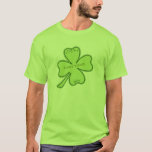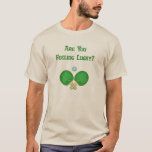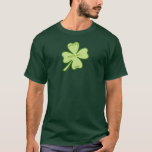Lucky shamrock St. Patrick’s Day t-shirts, sweatshirts, hats, coffee mugs, shoes, and other assorted gifts from the Blarney Stone. Put on your Irish Lucky Charm shirt and have the Luck of the Irish on your side. St. Paddy blesses you with four leaf clovers and a wee bit of the Irish magic. Shop for a bit of Irish luck in our St. Patty’s Day gift shoppe.
Sort: newest | popular Showing 1 - 20 of 25 products. 1 2 > >>
Sort: newest | popular Showing 1 - 20 of 25 products. 1 2 > >>
THE HISTORY OF ST. PATRICK’S DAY
St. Patrick is the Patron Saint of Ireland, known through all of Christianity, and associated with good luck, green shamrocks, and drinking beer, but who was he? Many have told tall tales of St. Patrick, such as his banishing all the snakes from Ireland. Did you know they kissed the Blarney Stone before telling their stories? Half the stories of St. Patrick are fairytales.
Patrick came from a wealthy British family either in Scotland or Britain. It’s believed that his birthname was Maewyn Succat, and that his Romanized name was Patricius. His father was either a Christian deacon or an army officer depending on which legend you believe, but all agree that Patrick was stolen away from that life at the early age of 16 and sold into slavery. Taken prisoner by a gang of Irish raiders, he was taken to Ireland for the next six years, held captive, and put to work as a shepherd. During his lonely hours tending sheep far away from people, he immersed himself in Christianity.
One day in a dream, a voice came to Patrick and told him to leave Ireland. He believed it to be the voice of God. Thus began his journey to sainthood.
He walked hundreds of miles, finally making his way to Britain, where another dream guided him. This time an angel of God told Patrick to return to Ireland as a missionary. He spent the next dozen years or so studying for the priesthood, finally becoming an ordained priest. He returned to Ireland and ministered to the existing Christians, with the goal of converting more to Christianity there.
Being well acquainted with existing Irish beliefs, he incorporated traditional Irish rituals into his teachings, such as using bonfires to celebrate Easter holding with the Irish tradition of honoring their gods with bonfires. He added the Sun to the Christian cross, creating what we call the Celtic Cross. The Sun was a powerful symbol for the Irish.
He traveled all of Ireland, establishing monasteries, schools and churches. It is believed that he used the three leaf shamrock to teach the concept of the Trinity. Legend also has it that he drove all the poisonous snakes from Ireland. Was this one of the tall tales, told by those who kissed the Blarney Stone?
St. Patrick’s Day (also known as St. Paddy’s Day) is the celebration of the day of his death, March 17, 461 A.D. The Irish have celebrated this day for thousands of years. Traditionally it was a day of going to church, and celebrating later with dancing and a feast of bacon and cabbage. The color of St. Patrick’s Day was blue.
Hundreds of years later in the United States, Irish soldiers far from home started the first parade, a way to feel closer to their honored Saint and their beloved Ireland. These early parades featured bagpipes and drums. It wasn’t until the 19th century that green became the color of St. Patrick, being the color of the shamrock, the Emerald Isle and Ireland’s national colour.
During the Great Potato Famine hundreds of thousands of Irish immigrated to the United States, but were not welcomed. When they took to the streets to honor their beloved St. Patrick, the newspapers portrayed them as drunken, violent monkeys, a twist of irony for a holiday that in Ireland even into this century closes down the pubs for this honored day.
Their great numbers gave them great power, and the Irish soon gained their acceptance both socially and politically.
Today St. Patrick’s Day is celebrated in many countries.
.
.
.
.




















